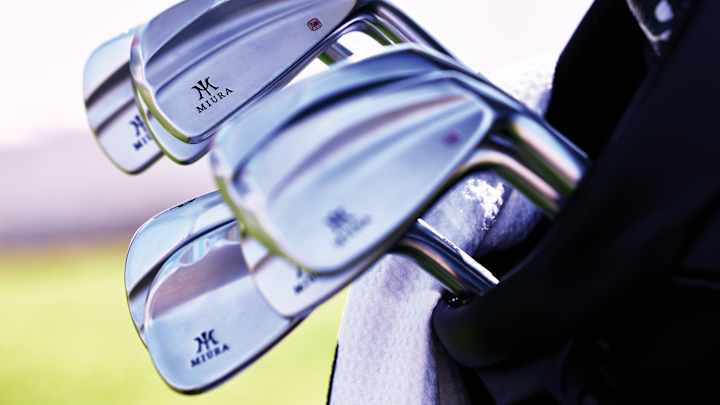Miura Golf's KM 700 Forged Irons Have Been Worth the Wait

Miura Golf has never held itself to the regular rhythm of new product drops like many in the equipment manufacturing industry. Instead, the company diligently goes about its business, honing and refining ideas until there is a club worthy of being introduced.
The new KM 700 forged irons are such an instance.
In development for five years, the KM 700 irons represent company namesake Katsuhiro Miura's finest work to date.
“Katsuhiro Miura’s life and career is an inspiration," said Bill Holowaty, COO, Miura Golf. “The KM 700 is the culmination of his rigorous approach to craftsmanship, an approach that has been diligently passed down to the entire team of Miura craftsmen who now proudly take up his mantle of pride and precision."
Shop: For the latest in irons, visit our online store
The sleek lines and curves are what first capture the attention, but a closer inspection reveals a lot more. The hosel and heel, for example, are designed in such a way that the center of gravity is moved 3 millimeters closer to the toe for a larger sweet spot. And the benefit of such an exacting move are off-center hits that go straighter and farther in distance.
Miura also used its proprietary "third-strike" manufacturing process on the clubs that are forged SC 20 carbon steel. The process allows for a subtle alteration to the club head's design, which is intended to return the club head to square at impact.
The KM 700 irons are available 4-iron through pitching wedge in traditional lofts. Each club retails for $400.
While a hefty price, it's an instance of paying for what you get.
“We know of no other forging process able to achieve this level of precision and consistency,” Holowaty said, “and no factory has ever attempted this level of precision. It is a fitting tribute to the legacy of Katsuhiro Miura.”
Katsuhiro Miura has been crafting clubs for 65-plus years and obviously built a voluminous wealth of knowledge that he's not hesitant to share. In the development of the KM 700, one of Miura's proteges contributed to the search for the clubhead's optimum weight distribution, which was essential for making the the club playable for a wider audience.
The key component, according to a Miura release, is the "toe-cut grind visible on the sole. Optimized camber and precise bounce promote the best ball-on-club-face contact." The sole appears to be a bit wider than normal.
